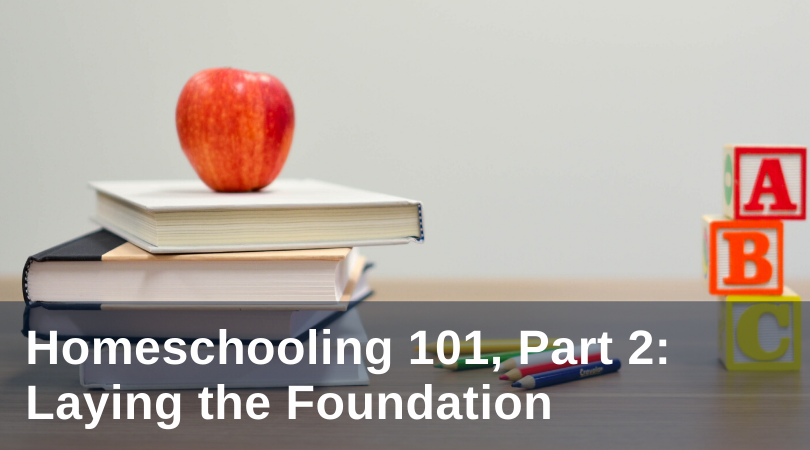
In the first part of this series, I offered some thoughts on homeschooling and crisis management. In this installment, I’ll give suggestions pertaining to essential needs.
My colleague Tim O’Malley offered a helpful image: before acting in a crisis, first, set up the medical tent. In other words, make sure essentials are covered. For kids, these are connection, sleep, nutrition, and exercise. It doesn’t matter if you have a flawless lesson plan and resources to fill the day; things can spiral very quickly if these basics are overlooked.
Connection first.
Children were designed for connection. They know when you’re out of sorts and when you experience them as a burden, and they’ll reflect that back to you all day long, even if you tell them otherwise and fill their day with all the “right” things. All parents have rough moments, but it’s hopeful that attuned connection and repair of ruptures, not parental perfection, build resilience and secure attachment in a child. In this dynamic, your little one learns that bumps happen and people aren’t perfect, but they can rely on you to work through difficulty and return to a connected baseline. The bottom line is, it’s never too late to turn a bad day around (or at least make it better) through active connection. How?
For children of all ages:
Smile. Be gentle. Speak kindly. If you’re overwhelmed, give yourself some grace, let yourself be stressed, and remind yourself that your kids aren’t the burden, the circumstances are.
Be playful in little interactions. Put on fun music (here’s a playlist of our favorites!).
Read aloud together. It doesn’t have to be for long; even one story has a calming effect for all ages that’s almost magical, especially if you have fun with voices and inflection! 20–30 minutes of all-in storytime can sometimes buy you 1–2 hours of absorbed, self-directed play (for kids 4-ish and up), during which you can work.
Apologize and actively “repair” as often as necessary so the atmosphere remains one of settled connection even in mistakes, rather than tension and emotional isolation when someone has a bad day.
For younger children:
Let your little ones be present to you by watching or helping you clean a window or wash dishes with enchantingly soapy water. Connecting to you in everyday normalcy is far better for them developmentally than flashcards and gadgets.
Narrate your actions as you go about your day; connect by inviting them into your sphere, rather than just remarking on their activities. “See the dark coffee pour into the mug? Can you smell it?” No need to go overboard, but these little points of connection truly help.
When your child brings something to show you, or wants you to watch them try something, receive them as much as possible. You’re their favorite—connecting with you gets those “happiness hormones” flowing, bolstering you both to weather stressors together.
For older children:
Begin the day letting them know you love them. Leave an occasional note or surprise by their breakfast plate.
Let them listen to their favorite music while making beds or preparing meals.
Put the phone down, welcome their chatter, listen to them (even if you feel maxed out!). When they’re really heard, they go about their day more restfully and self-sufficiently.
Reassuring physical contact reduces stress hormones and raises endorphins. Depending on the child, they may not initiate, but older kids need physical touch as much as babies and toddlers. Reach out.
When they make poor choices (as we all do), give them a chance to repair. This engages their agency and offers some control in the situation, reducing anxiety, whereas resorting to discipline right away amplifies feelings of helplessness and perfectionism.
If your child has fears about these sudden changes, be their rock. Field questions willingly; nurture a culture of safety.
For you:
Make sure you’re connected to supportive adults, and, most importantly, to the Lord. Pray in little moments for the grace to trust in God’s personal love and Providence, and for the grace to love your children where they are. During family prayer, lighting a candle has an instantly absorbing effect, drawing children and adults alike into stillness. A simple reading of the daily Gospel, inviting the children to share words or images that stood out to them, nurtures a culture of “rootedness” in prayer.
When you feel cooped up, take everyone on a post-dinner drive to a place of beauty. Stop for a while, look for animals, absorb the loveliness. Make it special with warm tea and honey in to-go cups, and play sacred music to relax everyone before bedtime.
Sleep, Nutrition, and Exercise
These are the remaining poles of the ‘medical tent.’ The more sleep little ones get, the better they empathize, learn, and regulate emotions. Kids often don’t get enough rest, so let them sleep later in the mornings and during naps if they need to while they’re home.
On the nutrition front, consistent protein keeps blood sugar stable. My kids’ blood sugar spikes and crashes have sparked tears and meltdowns; their tiny bodies react more intensely than ours to fluctuations. For picky eaters, this could be a time to experiment with creatively incorporating nourishing food, like a smoothie recipe filled with veggies, fruit, and protein.
Outdoor play is the best exercise—running, tree climbing, digging for worms, bird-watching. On rainy days, mini-trampolines indoors, dance parties while cleaning, and “obstacle courses” around the house help get everyone moving.
Most importantly, give them (and yourself!) creative space. Make jump ropes, balls, shovels, little buckets, and other playthings accessible so they can get lost in their play without needing to ask you for things.
Once you’ve sorted out these basics, then you can move on to thinking about creating a routine for your children at home.
Like what you read? Submit your email below to have our newest blogs delivered directly to your inbox each week.


